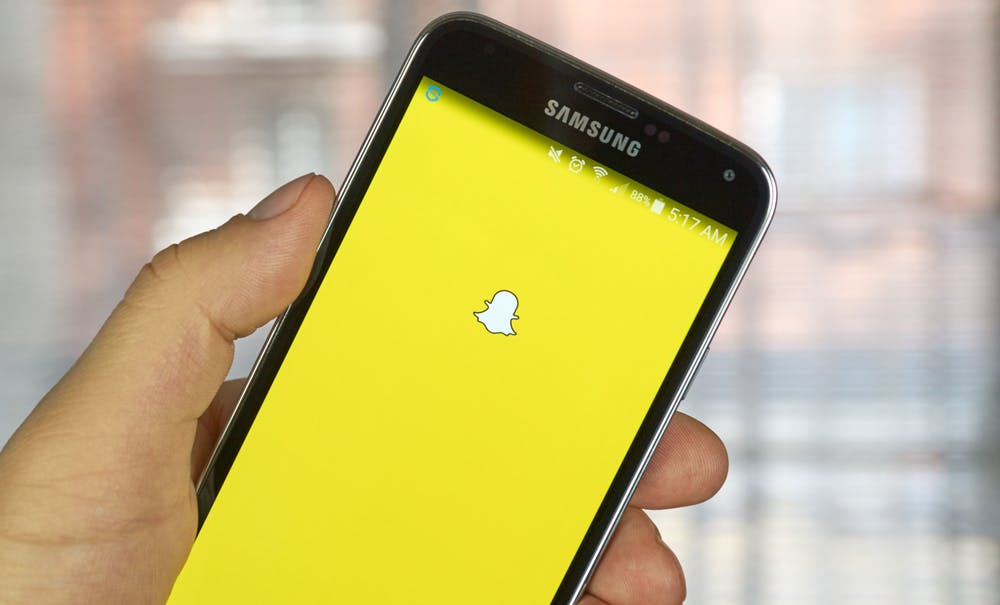Short of touring an office or corporate campus in person, nothing conveys a potential employer’s brand promise and the experience of working there better than video. It can be used to convey anything from corporate culture, to the work environment, to benefits.
But if you’re assuming that “traditional” job advertising and brand-building on LinkedIn, Twitter, and Facebook are the answer, think again. A 2015 study by comScore found that, in the United States, the “big three” social media platforms skew largely towards older generations: only 16 percent of Facebook’s regular users are in the millennial sweet spot between 18 and 24 years old (Twitter sits at 19 percent and LinkedIn at 14 percent).
As social networks continue to evolve, they’re becoming more visually oriented. Image-rich content enjoys significantly higher engagement rates — especially among younger users — making it essential to social media success. That why an upstart like Snapchat — with a relatively modest 100 million users, is winning the social media war for the millennial generation. Some 45 percent of Snapchat’s users are in that age group.
Snapchat’s real-time video functionality is its secret weapon. It fits perfectly with the lifestyle of today’s graduate, because it’s instant, it allows users to select what kind of content they want to see, and it’s mobile-native. Snapchat users view more than eight billion videos every day — more than triple the number just a year ago. And its users send 67 percent more images and videos than Facebook every day.
Not to be outdone, Facebook and Twitter have incorporated real-time video into their platforms. Facebook Live enables users to stream live video and notifying followers when they go live so that they can tune in (and comment on what they’re seeing). Facebook’s Canvas ad platform uses a combination of images, video, text, and call-to-action buttons to create an interactive advertising experience. And last year, Twitter acquired Periscope, another live video streaming application, to connect its 310 million monthly active users.
Here’s how can today’s video/social-savvy recruiter use real-time video, powered by social media, to reach this dynamic segment of the population:
- Have employees commandeer your social media account and stream live video for a few hours, or perhaps even a whole day. From a recruitment perspective, these initiatives — Snapchat calls them “Takeovers” for example — can focus on just about anything that communicates your employer value proposition: a day in the life of an employee, your commitment to the environment or other social causes, or what it’s like to work at a specific location. After all, not every UCLA grad gets excited about the prospect of swapping southern California for Lincoln, Nebraska. A great example of this approach recently was Hootsuite’s “Operation #FollowTheSun”. The company used Twitter’s Periscope platform and, for seven hours, literally followed the sun as it visited Hootsuite’s offices in Singapore, Romania, the United Kingdom, Brazil, and the United States. Some 5,000 viewers tuned in, generating 11,000 “hearts” and an increase in visits to the company’s careers site, along with more employment applications.
- The ultra-short shelf-life of Snapchat messages are a big part of its appeal, but that obviously doesn’t lend itself well to job advertising. At a minimum, however, its Stories feature can be used to advertise a role for up to 24 hours, while the expanded Live Stories can be used to create curated streams of user-submitted snaps from various locations and events. These have proven to be immensely popular — in fact, some can generate up to 40 million views, which is far more than any prime time television show. From a recruitment standpoint, a Live Story can be used to share anything from an all-company community involvement day, to a staff picnic, to a career fair. If a prospective candidate can’t join you for these events in person, have them join you on their mobile device.
- Snapchat and Facebook, in particular, are evolving their advertising offerings using rich content such as video. Snapchat’s 3V (vertical video views) ads enable companies to target advertising — including job ads — by its Discover channels, Live Stories, location and/or gender. Snapchat recently joined up with Nielsen Holdings to help advertisers measure the effectiveness of their campaigns. Facebook Canvas, meanwhile, enables recruiters to combine full-screen images, panoramic video, and text, making it a much more engaging way to reach potential hires than traditional online advertising. Similar to the way Tinder lets you swipe through potential mates, Canvas could be used to navigate job listings — or promote a company’s employer value proposition — with a simple swipe, while call-to-action buttons enable talent to engage in exploring and applying to job opportunities. Just like any paid Facebook ad campaign, Canvas campaigns can be configured to reach a specific target audience within a set budget.
Nowadays, video can be used to convey just about anything you want. Authenticity is key to appealing to today’s savvy grads — and that’s the beauty of real-time video, because it’s in-the-moment. But if you’re smart and creative in reaching out to this important audience, you can expand your reach to people who won’t just make great employees — they’ll make enthusiastic brand ambassadors.
